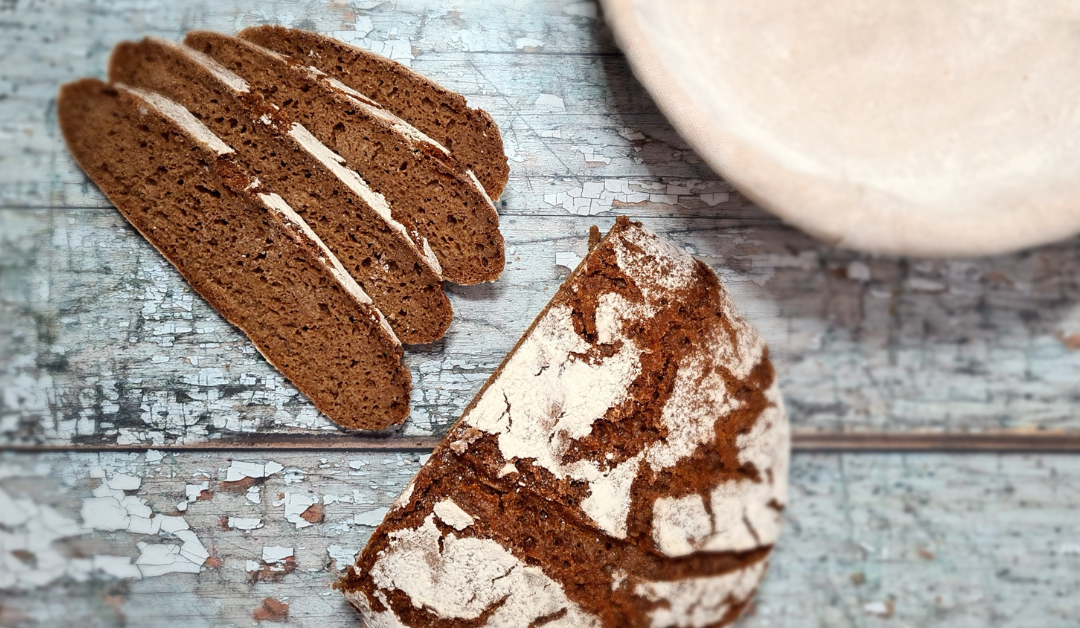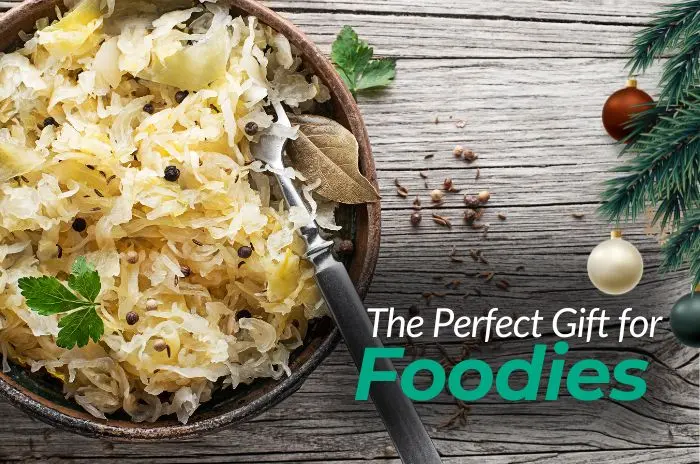From Gut Health to Sourdough:
My Fermentation Journey
From gut health to sourdough, my journey into fermentation began over a decade ago when I stumbled upon it in Costa Rica.
Living with Crohn’s disease for 35 years and IBS for 15 years, I understand the importance of gut health. When my symptoms started worsening due to the stress of my corporate IT career in 2008, I took a break to travel and ended up in the jungle of Costa Rica. With limited medical support, I turned to fermentation as a possible solution to my digestive issues.
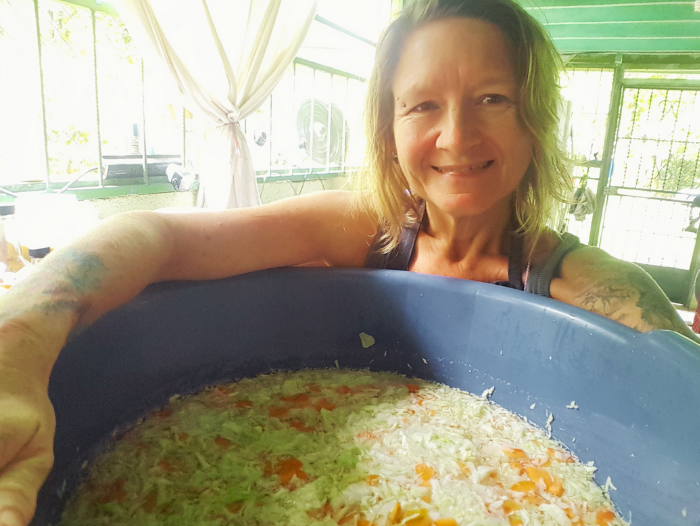
Starting with yogurt, sauerkraut, and kimchi, I eventually founded a fermented food and drink company in Costa Rica and learned to make a variety of ferments such as kombucha, ginger beer, kefir, tempeh, and many more. However, until recently, I had never made sourdough.
The Gut-Healing Power of Fermented Foods:
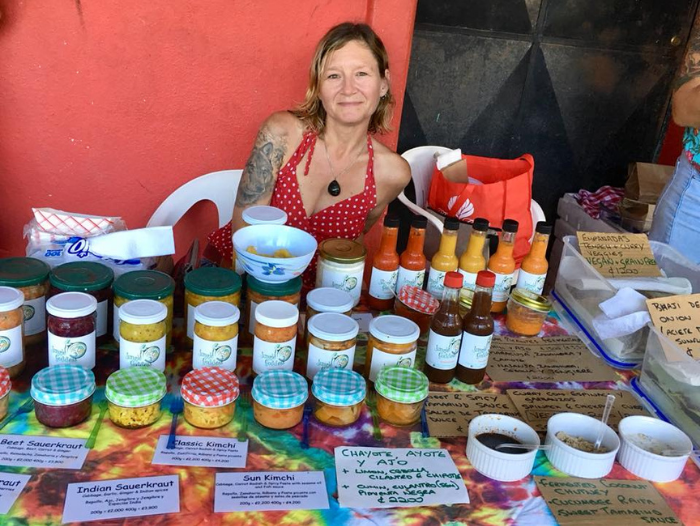
Fermented foods have been shown to provide numerous benefits for gut health.
These foods contain live microorganisms, or probiotics, which can help restore the balance of beneficial bacteria in the gut. This can be particularly helpful for individuals with digestive issues, such as Crohn’s disease and IBS. The probiotics in fermented foods can also help reduce inflammation in the gut, which is a common symptom of these conditions. Additionally, fermented foods can help improve digestion and nutrient absorption, which can lead to better overall health.
Some examples of fermented foods that can be beneficial for gut health include yogurt, kefir, sauerkraut, kimchi, and kombucha. Adding these foods to your diet may help improve your gut health and reduce symptoms associated with digestive issues.
How Fermented Foods Can Improve Mental Health
Our gut and brain are closely connected through the gut-brain axis, which is a communication network between our digestive system and our brain. This means that the health of our gut can affect our brain and our mental health. Fermented foods can help to improve the balance of good bacteria in our gut, which can positively impact our mental health and cognitive function. So, consuming fermented foods can not only support our gut health but also our brain health.
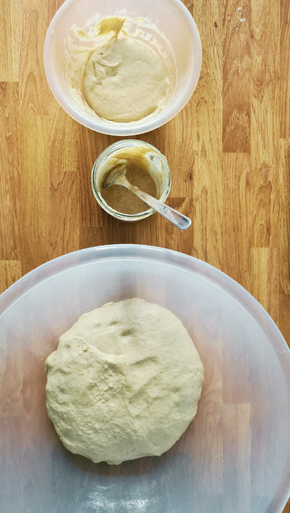
Getting To Know Sourdough
After attending a workshop and reading books on the topic (see recommendations below), I was finally motivated to try my hand at making sourdough. Using an established rye flour starter from the workshop, I began experimenting with different types of flour and feeding schedules.
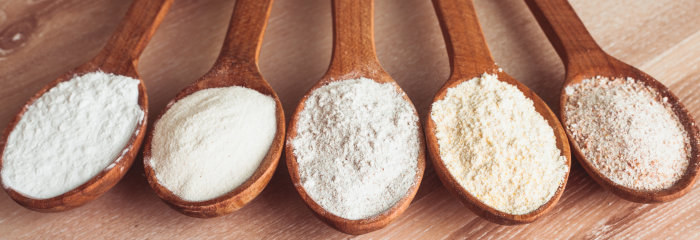
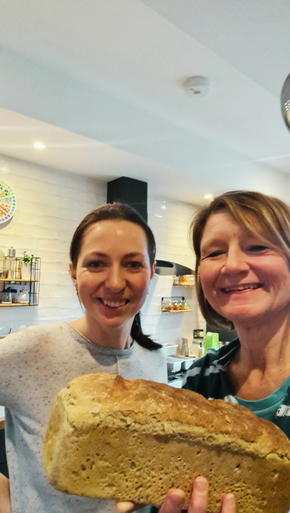
Making sourdough can be a complex process, but with patience and attention to detail, it can result in delicious and nutritious bread. While following two recipes by The Sourdough School, I learned that the leaven can’t be too dry, otherwise, bacteria activity is slow to get started. I also discovered that water should be added slowly to the dough as different types of flour have different absorption rates. Adding all the recommended water at once to my high-hydration loaf resulted in a thick batter rather than dough. Nevertheless, I persisted and ended up with three good loaves.
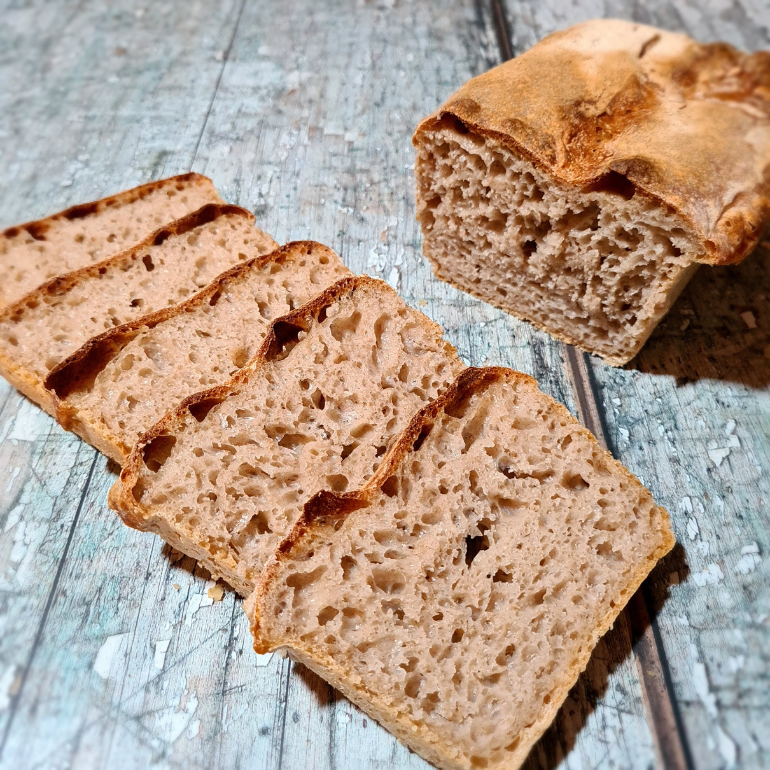
Fibre-Rich Sourdough
The Russian rye bread recipe was a great way to use up old leaven and starters, and the dough, though sticky, required no kneading due to the lack of gluten in rye flour. I ended up with five successful loaves, even though I wasn’t expecting so many.
My journey into sourdough making has just begun, and I’m excited to continue experimenting and perfecting my technique. Fermentation has played a significant role in improving my gut health, and I encourage others to give it a try. With a little patience and practice, anyone can become a fermenter and enjoy the benefits of delicious and nutritious ferments.
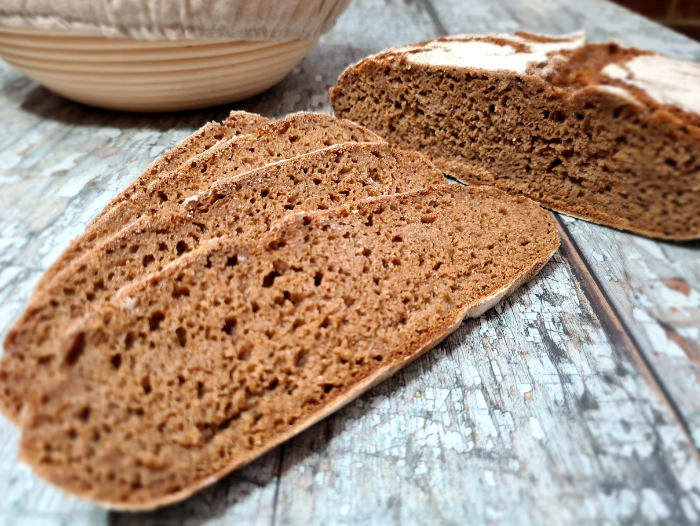
Off To A Great Start!
While I’d love to show you step-by-step photos of my sourdough-making process, I have to admit that I didn’t take any this time around. It was my first time experimenting with sourdough, and let’s just say that not everything went according to plan. Perhaps the lack of photographic evidence is to my benefit! But don’t worry, I will document the process more thoroughly next time, and hopefully, I’ll have a more successful outcome to share with you. In the meantime, let me just say that the end product was pretty tasty, despite its slightly wonky appearance.
If you are interested in learning more about sourdough or following along on my sourdough journey, I encourage you to follow me on social media or sign up for my newsletter. I’ll be sharing my experiences, tips, and recipes as I continue to explore the world of sourdough baking. Whether you’re a seasoned baker or a beginner, I invite you to join me on this delicious and rewarding journey!
Getting To Know Sourdough
After attending a workshop and reading books on the topic (see recommendations below), I was finally motivated to try my hand at making sourdough. Using an established rye flour starter from the workshop, I began experimenting with different types of flour and feeding schedules.


Making sourdough can be a complex process, but with patience and attention to detail, it can result in delicious and nutritious bread. While following two recipes by The Sourdough School, I learned that the leaven can’t be too dry, otherwise, bacteria activity is slow to get started. I also discovered that water should be added slowly to the dough as different types of flour have different absorption rates. Adding all the recommended water at once to my high-hydration loaf resulted in a thick batter rather than dough. Nevertheless, I persisted and ended up with three good loaves.

Fibre-Rich Sourdough
The Russian rye bread recipe was a great way to use up old leaven and starters, and the dough, though sticky, required no kneading due to the lack of gluten in rye flour. I ended up with five successful loaves, even though I wasn’t expecting so many.
My journey into sourdough making has just begun, and I’m excited to continue experimenting and perfecting my technique. Fermentation has played a significant role in improving my gut health, and I encourage others to give it a try. With a little patience and practice, anyone can become a fermenter and enjoy the benefits of delicious and nutritious ferments.

Off To A Great Start!
While I’d love to show you step-by-step photos of my sourdough-making process, I have to admit that I didn’t take any this time around. It was my first time experimenting with sourdough, and let’s just say that not everything went according to plan. Perhaps the lack of photographic evidence is to my benefit! But don’t worry, I will document the process more thoroughly next time, and hopefully, I’ll have a more successful outcome to share with you. In the meantime, let me just say that the end product was pretty tasty, despite its slightly wonky appearance.
If you are interested in learning more about sourdough or following along on my sourdough journey, I encourage you to follow me on social media or sign up for my newsletter. I’ll be sharing my experiences, tips, and recipes as I continue to explore the world of sourdough baking. Whether you’re a seasoned baker or a beginner, I invite you to join me on this delicious and rewarding journey!
Rise to Better Gut Health with Sourdough
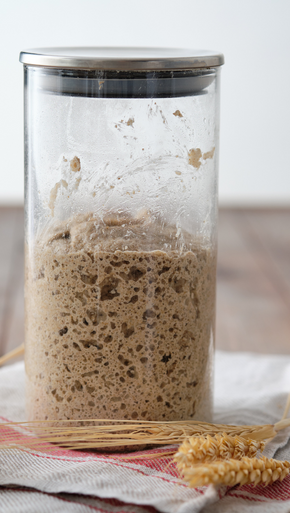
Sourdough bread is often recommended for people with digestive issues because it is easier to digest than commercial bread made with baker’s yeast. This is due to the longer fermentation process involved in making sourdough, which breaks down the gluten and phytic acid in the bread.
Gluten is a protein found in wheat and other grains that can be difficult for some people to digest. The longer fermentation process involved in sourdough making breaks down the gluten into more easily digestible forms, making it easier on the digestive system.
Phytic acid is an anti-nutrient found in grains that can bind to minerals and make them harder for the body to absorb. The lactic acid bacteria and yeast involved in sourdough fermentation break down the phytic acid, making the minerals more bioavailable.
Additionally, sourdough contains beneficial bacteria that can help support the gut microbiome. These bacteria can help improve digestion, boost immunity, and even have a positive impact on mental health.
For people with Crohn’s disease and IBS, sourdough may be a beneficial addition to their diet due to its easier digestibility and potential to support gut health. However, as with any dietary change, it is important to consult with a healthcare professional before making significant changes to your diet.
The process of making sourdough can be broken down into several key steps:
Creating a Starter: The first step in making sourdough is to create a starter, a mixture of flour and water allowed to ferment. To create a starter, mix equal parts flour and water in a jar, cover it with a cloth, and let it sit at room temperature for several days. During this time, natural yeasts in the air will start to colonize the mixture, causing it to bubble and ferment.
Feeding the Starter: Once you have a starter, you need to feed it regularly to keep it alive and active. To do this, discard half of the starter and add equal parts flour and water, stirring until smooth. Repeat this process every day or so, or whenever the starter starts to look sluggish or inactive.
Making the Dough: When you’re ready to make sourdough bread, mix flour, water, salt, and some of your starter together in a large bowl. Knead the dough until it becomes elastic and smooth, then let it rise for several hours.
Shaping the Dough: Once the dough has risen, shape it into a loaf or other desired shape, and place it into a proofing basket or onto a baking sheet. Let it rise again for several more hours.
Baking the Bread: Finally, bake the bread in a hot oven until it’s golden brown and crusty on the outside. Let it cool before slicing and serving.
These are the basic steps to making sourdough bread, but there are many variations and techniques you can use to achieve different results. Experiment with different flours, hydration levels, and fermentation times to find the perfect recipe for your taste and needs.
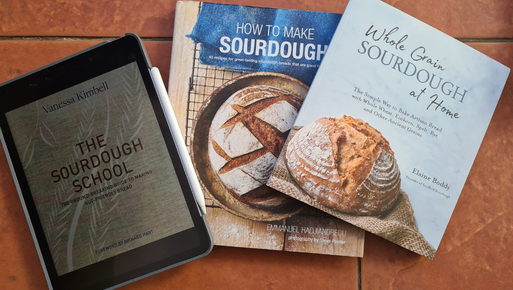
Book Recommendations:
As an Amazon Associate, I earn from qualifying purchases.
The Sourdough School by Vaness Kimbell – click here to buy
How To Make Sourdough by Emanuel Hadjiandreou – click here to buy
Whole Grain Sourdough at Home by Elain Boddy – click here to buy
Would You Like to Learn The Magic of Fermenting? ✨
Look No Further! I’ve Got the Perfect Gift For Foodies, Health Enthusiasts or Anyone Curious About Fermenting
Treat Yourself or a Loved One to a Private 2.5-Hour Fermenting Workshop
Workshops available in-person in Lancing, West Sussex or Online
Join my fermenting workshop and create gut-friendly treats that everyone will love!
Gift Cards Available!
Are You Ready to Change Your Gut Story?
You don’t have to manage this alone. Take the first step to feeling better today.

